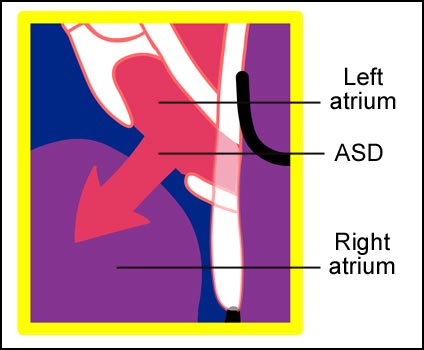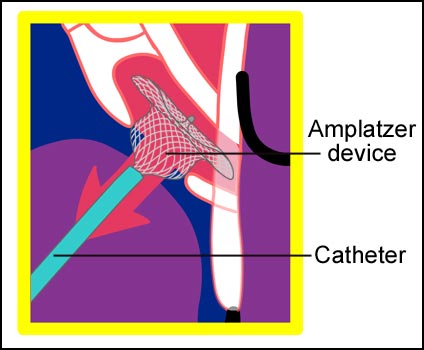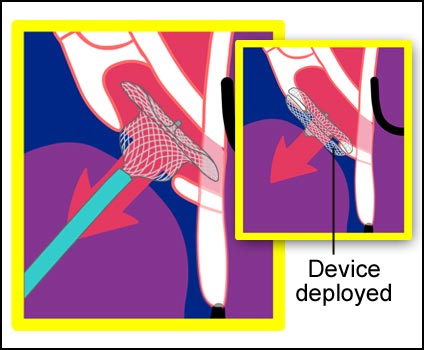
Atrial Septal Defect Closure
Secundum atrial septal defect, or ASD, is a hole in the atrial septum that separates the atria (see fig. 1). This allows oxygen-poor blood to flow from the left atria into the right atria (see fig. 2). This increases the volume of blood in the heart. As a result both atria, the right ventricle, and the pulmonary artery are enlarged.
Most ASD secundum defects can be closed by interventional catheterization technique. Most closures are carried out with an Amplatzer Septal Occluder Device (see fig. 3). The specialized catheter is inserted through the inferior vena cava into the right atrium of the heart. The Amplatzer device is expanded and snapped into position. The device closes the defect and the catheter is removed (see fig. 4).
Figure 1: Cut away view of the heart with atrial septal defect (ASD).
Figure 2: Zoomed in view of ASD.
Figure 3: Catheter enters the left atrium at the site of ASD and Amplatzer device is deployed.
Figure 4: The catheter is removed and the Amplatzer device closes off the ASD.
Visit Medmovie.com Website for more information.



